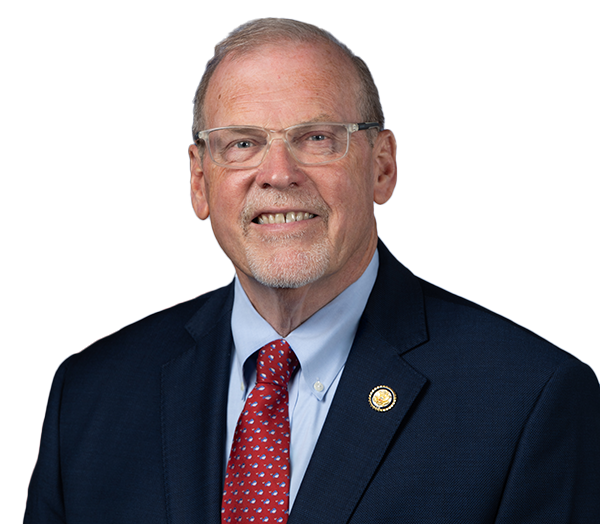Community pays respects to Courthouse Tragedy victims
Washington,
March 16, 2012
By Thomas Lester Descendants and public officials gathered at VFW Post 1115 in Hillsville on March 13 and paid respect to the memory of Judge Thornton Massie, Commonwealth Attorney William Foster, Sheriff Lewis Webb, Juror Augustus Fowler and trial witness Elizabeth Ayers, who were killed as a result of the gunfight in court and Floyd and Claude Allen, who were executed for their role in the fracas. “Floyd Allen was on trial yesterday, 100 years ago; today, 100 years ago; and tomorrow, 100 years ago, the jury delivered its verdict. You know much of the narrative,” said Centennial Chairman Gary Marshall. “We are here today not to relive that history; we are here today to memorialize, remembering it had such a significant impact.” Marshall said there were three reasons to pay respects to the date: infamy, magnitude and education. Marshall said there was precedence for marking the occasion of horrific events, such as Dec. 7, 1941. “We believe that March 14, 1912 — not on the same scale, but certainly locally and regionally, is a date that lives in infamy and when we come to this date, we pause,” he said. “Something of the solace of that date and our pause to reflect gives some soothing to the horror of that history.” Marshall said during the course of the Symposium held Monday and Tuesday, the Courthouse Tragedy was compared to other acts of violence in court. “We had a judge from Northern Virginia review any number of court assaults in courtrooms in subsequent history from 1912,” he said. “In each of those, there were judges killed, deputies and sheriffs killed, commonwealth attorneys and lawyers killed, jurors killed, witnesses killed, but never in the rehearsal of history since 1912 have we faced the kind of magnitude of loss of human life representing court officers and court servants.” And, he noted, there are lessons that we can take from the tragedy and apply to our lives even today. “We’ve given ourselves to education relative to the significance and meaning of this history, the consequences of this history and the principles we’ve learned and we ought to put into application,” Marshall said. Following Marshall’s opening remarks, a joint resolution by the General Assembly was presented to the Carroll County Historical Society by Senator Ralph Smith and Delegate Anne B. Crockett-Stark. Former state Senator Virgil Goode, who represented this area for a number of years, spoke about the first time he learned about the dark events of 1912. “My dad was a country lawyer and I was barely a teenager and he said come with me to Carroll County today. We rode to Carroll and he showed me the bullet hole that was there in the wall as you walk up the steps to the courthouse and he began to tell about those that died that day and he told about the detectives, the capture of Floyd and Claude Allen, getting Wesley Edwards back,” Goode said. “Floyd Landreth was living then and represented this area. To the best of my recollection, he was an attorney in 1912 and was in the courthouse that day and may have been the equivalent of the assistant prosecutor to William Foster. He and dad talked about the events of that day. That was a frequent topic throughout Southwest and Southside Virginia.” Congressman Morgan Griffith detailed a couple of interesting connections. On his way into Hillsville, he stopped at the Old Lodge Armory in Willis and spoke to its owner, Len Fagan. Griffith said he learned in conversation that Fagan was a great-great-grandson of Sidna Allen. “He said one of his uncles talked about it and said it was a hard thing growing up in the area because people knew about it. There were feelings on both sides,” Griffith said. “He said sometimes there would be fights at school or words; it was tough.” Griffith noted that his great-grandmother from Rockbridge County had participated in a Bible study group at the prison where Sidna Allen was jailed, and had held a prayer session with him. It was during that time that she purchased a box made by Allen. “This has been a family treasure. It says inside, ‘Made by J. Sidna Allen, $5.’ My grandmother got it upon her death and a few years before my grandmother died, she gave me the box. She said you’re the one in the family who loves history, you should have the box,” Griffith said. Griffith then addressed the question of justice, saying that we’ll never truly have complete answers to innumerable questions that arise from the tragedy. “Was justice served?” Griffith asked. “I have to tell you, there are many questions that are asked, that can be asked and that will continue to be asked. Were the Edwards’ arrested legally or illegally? Did Floyd receive a fair and speedy trial? Did Foster and Goad have some kind of issue with the family? Would an appeal have overturned Floyd’s conviction? Was there a conspiracy by the Allen family? Did officers plan, if Allen wouldn’t go into custody, to go into armed conflict? Who shot whom? Would an appeal have overturned those convictions? I have to say to you I don’t think any of us will ever know the answer to those questions. I don’t think they can be answered. We are looking backward with a different set of social mores and customs. It is very difficult.” At the end of Griffith’s remarks, family members and other dignitaries were recognized at displayed wreaths at the front of the assembly while a floral arrangement with seven candles was lit by Marshall. On Wednesday, the wreaths were placed on the gravesites of the seven whose lives were lost as a result of the shooting. |
Stay Connected
Use the form below to sign up for my newsletter and get the latest news and updates directly to your inbox.

